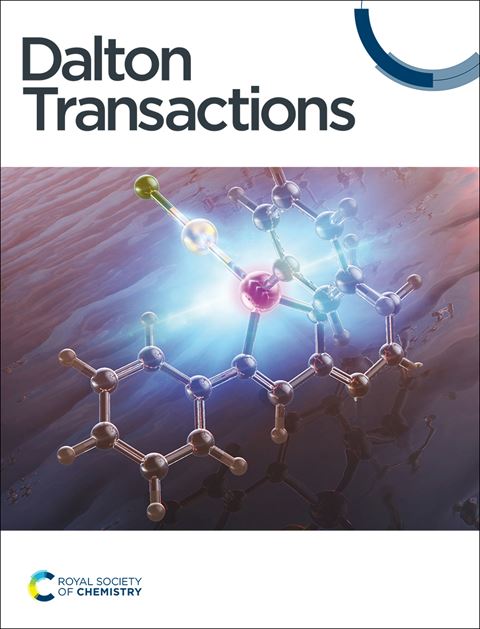Enhancing CO2 Reduction Efficiency through Electrolyte Immersion in Hierarchical Bismuth-Nickel Catalysts
IF 3.5
3区 化学
Q2 CHEMISTRY, INORGANIC & NUCLEAR
引用次数: 0
Abstract
Nanostructures are critical to improve contact area with an electrolyte and catalytic efficiency for the CO2 reduction reaction (CO2RR). However, their hydrophobicity conflicts with the intended increase in contact area and complicates determination of active contact area. Here, bismuth-nickel (BiNi) micro-nano hierarchical catalysts for CO2RR were studied to understand the effects of electrolyte-catalyst contact area variation with immersion duration in an aqueous electrolyte. The immersed BiNi samples showed about 13.4-fold higher formate production compared to the pristine BiNi sample. The 2-day pre-immersed BiNi sample exhibited Faradaic efficiencies (FE%) of ~80.1% for formate and ~10% for H2 with a current density of 10.2 mA cm-2 at -1.5 V vs. Ag/AgCl. In contrast, the pristine BiNi catalysts exhibited an FE% of ~12.9% for formate and ~76.3% for H2 with a current density of 5.38 mA cm-2. Our experimental results reveal that improved contact between the electrolyte and catalyst surface through pre-immersion can lead to enhanced CO2RR efficiency of formate production in hierarchical BiNi catalysts.通过电解质浸入分层铋镍催化剂提高二氧化碳还原效率
纳米结构对于提高与电解质的接触面积和二氧化碳还原反应(CO2RR)的催化效率至关重要。然而,纳米结构的疏水性与预期增加的接触面积相冲突,并使活性接触面积的确定变得复杂。在此,我们研究了用于 CO2RR 的铋-镍(BiNi)微纳米分层催化剂,以了解电解质-催化剂接触面积随水性电解质浸泡时间变化的影响。与原始 BiNi 样品相比,浸泡过的 BiNi 样品的甲酸盐产量高出约 13.4 倍。与 Ag/AgCl 相比,预浸 2 天的 BiNi 样品在 -1.5 V 电压下的电流密度为 10.2 mA cm-2 时,甲酸的法拉第效率(FE%)约为 80.1%,H2 的法拉第效率(FE%)约为 10%。相比之下,原始 BiNi 催化剂在电流密度为 5.38 mA cm-2 时,甲酸的 FE% 约为 12.9%,H2 的 FE% 约为 76.3%。我们的实验结果表明,通过预浸泡改善电解质与催化剂表面之间的接触可提高分层 BiNi 催化剂生产甲酸盐的 CO2RR 效率。
本文章由计算机程序翻译,如有差异,请以英文原文为准。
求助全文
约1分钟内获得全文
求助全文
来源期刊

Dalton Transactions
化学-无机化学与核化学
CiteScore
6.60
自引率
7.50%
发文量
1832
审稿时长
1.5 months
期刊介绍:
Dalton Transactions is a journal for all areas of inorganic chemistry, which encompasses the organometallic, bioinorganic and materials chemistry of the elements, with applications including synthesis, catalysis, energy conversion/storage, electrical devices and medicine. Dalton Transactions welcomes high-quality, original submissions in all of these areas and more, where the advancement of knowledge in inorganic chemistry is significant.
 求助内容:
求助内容: 应助结果提醒方式:
应助结果提醒方式:


